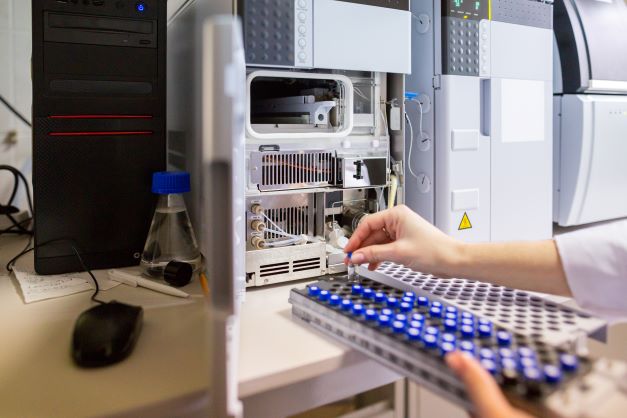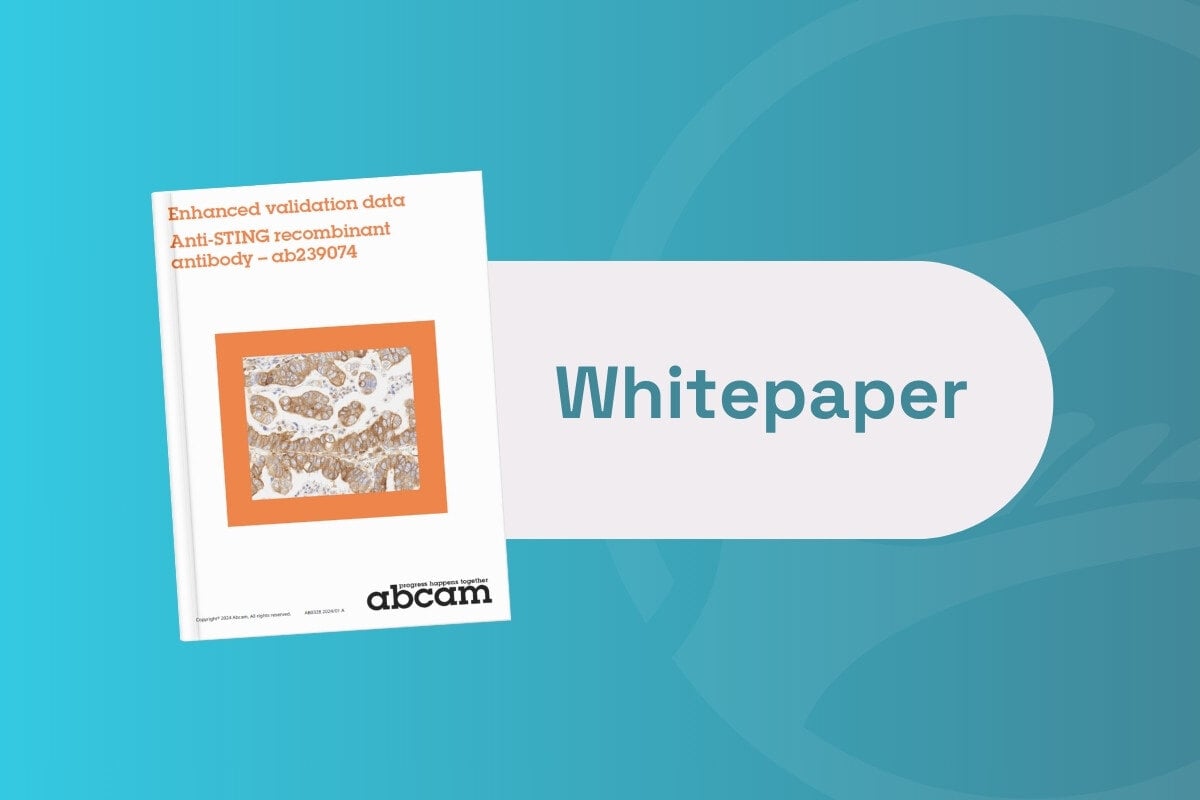Mass Spectrometry: Modern Medicines Swiss Army Knife

Mass spectrometry is a well-established imaging technique across the medical and pharmaceutical landscape. Mass spectrometry imaging – commonly referred to as MSI – is an incredibly versatile means of visualising the spatial distribution of molecules across a variety of media. Its applications in healthcare range from the analysis of tissue samples and cancer cells to the identification of new targets in drug discovery, and trials are currently being run on the veracity of using MSI to identify microplastics in tissue.
MALDI – which stands for matrix-assisted laser desorption ionisation – is one of the primary MSI techniques used around the world for tissue-based research. As the precision of analytical techniques has been refined with continued technological advancement, the resolution and quality of data which researchers are able to obtain is consistently improving.
Chelsea Nikula, a former Higher Research Scientist at the National Physical Laboratory, provides her insights on some of the applications of mass spectrometry in disease research.
Philippa Hart, Lead Scientist in Mass Spectrometry at The Medicines Discovery Catapult, explains the applications of MSI in drug discovery and elaborates on some of the ways in which it can save time for researchers.
Melanie Bailey, Professor of Chemistry at the University of Surrey, discusses the applications of ion beam imaging in conjunction with MSI techniques.
Precision Analysis: Mass Spectrometry at Top Spec Resolutions
A major field for mass spectrometry imaging is disease research, in which it is used to localise different drugs and endogenous metabolites. Chelsea Nikula believes that mass spectrometry technology is currently undergoing a revolution in terms of the computational power available for analysis. “MSI technology is innovating pretty rapidly right now and as we’re pushing towards a smaller resolution, we’re really increasing the size of our datasets.” She gave the example of a section of mouse brain tissue collected at 30 micrometres: the data from this sample section alone comes to almost 90GB in size.
With the prestige and longevity of mass spectrometry imaging comes a wide selection of techniques available for researchers to use. Some of the methods discussed by Nikula included NanoSIMS, LESA, DESI, and the aforementioned MALDI MSI. “Techniques like NanoSIMS are really good for the detection of elements,” said Nikula,” whereas techniques like LESA are more useful for proteins and protein complexes.” She added that the method used to analyse a sample impacts the classes of analytes being detected, and methods should be chosen depending on the molecules that are of interest.
With DESI MSI, samples are analysed using a charged solvent spray which desorbs molecules from the sample surface. “There’s been a lot of improvement in the user-friendliness of this technique in the last five to ten years,” Nikula continued, adding that it was useful for looking at small-molecule metabolites as well as lipids. “You can optimise and change the detection of different chemical species you’re looking for by modulating the solvent system and changing the additives in the solvent.”
While NanoSIMS is one of the more expensive techniques on the market, it offers an incredibly high lateral resolution for data collection and analysis. “It provides you with the very highest lateral resolution,” added Nikula, “down to about 50 nanometres.” She highlighted the technique as being particularly useful when employed in investigating heavy-isotope labelled molecules.
Mass Spectrometry Imaging: A Tool for Spatial Biology in Drug Discovery
Along with genomic analysis, mass spectrometry imaging (MSI) can be a powerful tool for drug discovery. Philippa Hart explained that the approach taken by The Medicines Discovery Catapult for molecular imaging depended on the specific subject being investigated. “There’s quite a range of different mass spectrometry techniques that you can apply when working in drug discovery,” said Hart. A key area of focus for Hart is biodistribution: in particular, investigating the blood-brain barrier penetration of drugs and metabolites.
“One of the main advantages of MSI is that it can mostly be used without the need for labelling,” Hart continued. Some target molecules are difficult to attach a label to, which makes MSI incredibly useful for investigating their biodistribution. In the context of investigating molecules capable of crossing the blood-brain barrier, this also allows for the investigation of their behaviour without concern for potential changes associated with the addition of a label, Hart added.
"What we're really hoping to do in the future is show the translation of these biomarkers to show they are fully translatable."
MSI can also be applied as tool for spatial omics. This can involve taking a tissue slice and either analysing lipids and metabolites directly or performing on-tissue digestion for observation of proteins via tryptic peptides. Hart mentioned that this was useful in drug discovery and analysis, as it allows researchers to monitor the response of biological systems to therapeutic interventions.
A future ambition for the MSI team at The Medicines Discovery Catapult is to correlate lipid markers across preclinical models and human tissue or cells to show that the biomarkers being investigated are fully translatable. “What we’re really hoping to do in the future is to show the translation of these biomarkers using various different media,” added Hart.
Elemental Mapping and Mass Spectrometry
Melanie Bailey shared her insights on novel tissue engineering and single cell sampling approaches. One technique she discussed was ion beam elemental imaging, in which ions are accelerated to 10% of the speed of light prior to interacting with the sample. As Bailey explained, particles are backscattered from the surface, with signals analysed simultaneously to focus on the different elements within the sample. “We analyse all of these signals to build up a comprehensive amount of information about the elements that are present in our sample,” she said.
Bailey added that one advantage of ion beams over other mass spectrometry techniques was the absence of artefacts – alterations in the matrix of the sample that can change the image. “What you can do with this which you can’t do with conventional mass spectrometry is quantify what’s there,” continued Bailey. She added that these techniques lacked artefacts, which sometimes occur due to sample issues with ion suppression or ion enhancement. “If the matrix of your sample changes, your image can change accordingly. But that’s not the case with these nuclear techniques, which are very complementary.”
- Sparsely Connected Autoencoders: A Multi-Purpose Tool for Single Cell Omics Analysis
- Sequencing the Future at Spatial Biology Europe
- Advances in Long Read DNA Sequencing
Bailey explained that a major project of hers involved investigating the use of ion beam techniques together with mass spectrometry approaches. “We’re looking at elements or mapping and omics together, and it’s kind of a two-pronged attack.” Again, Bailey emphasised the level of detail and resolution that could be obtained from mass spectrometry profiles. “We’ve found through trace element mapping that in a particular region of the granuloma tissue, there’s a considerable accumulation of iron.” The presence of iron correlates with particular lipid markers that are thought to be important in the pathogenesis of tuberculosis.
Bailey went on to caution that there are limitations to mass spectrometry imaging, highlighting a particular constraint in ion suppression. “This is where you have multiple molecules coming into the mass spectrometer at the same time and they compete for ionisation. What that means is if you have something that’s in low abundance then it can be quite difficult to detect.” A tool used by Bailey and her team to circumvent this has been based on nanocapillary sampling, which enables researchers to separate out analytes individually to reduce the ion suppression effects that are problematic for imaging techniques.
Challenges and Opportunities for Mass Spectrometry Imaging
Discussing some of the challenges and opportunities anticipated in the field of MSI in the next five to ten years, there was a strong consensus on the functionality and application of mass spectrometry imaging methods for future research.
“There is a lot of work being done in the community to develop new methods to really pull out as much as possible from this data,” said Bailey. She hoped that more researchers would be interested in using mass spectrometry in their own studies. “It’s a great tool in a field that is rapidly evolving right now.” Nikula echoed Bailey’s thoughts, saying that her own experience had been that mass spectrometry imaging has been ‘really useful’ in uncovering molecules that other techniques such as bulk analysis weren’t able to identify.
A key advantage to MALDI imaging being laser-based is that the power of the laser can be increased subject to requirement. Hart described MALDI as a ‘great all-rounder’, with utility in untargeted analyses to investigate a wide range of molecules. “It’s easier to focus a laser beam than it is a stream of solvent.” She added that there were developments all the time in the world of mass spectrometry. “As soon as we can get more sensitive techniques, we can push this even further.”
Visit our Omics portal to read more articles about all the latest developments in spatial imaging. If you'd like to register your interest in our upcoming Spatial Biology US: In-Person event, click here.








